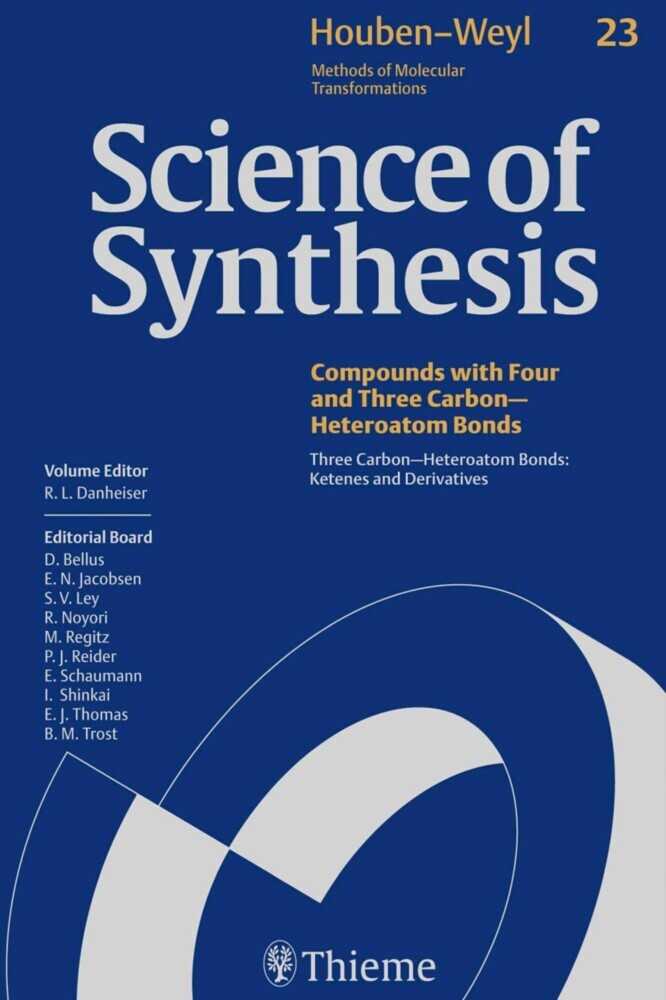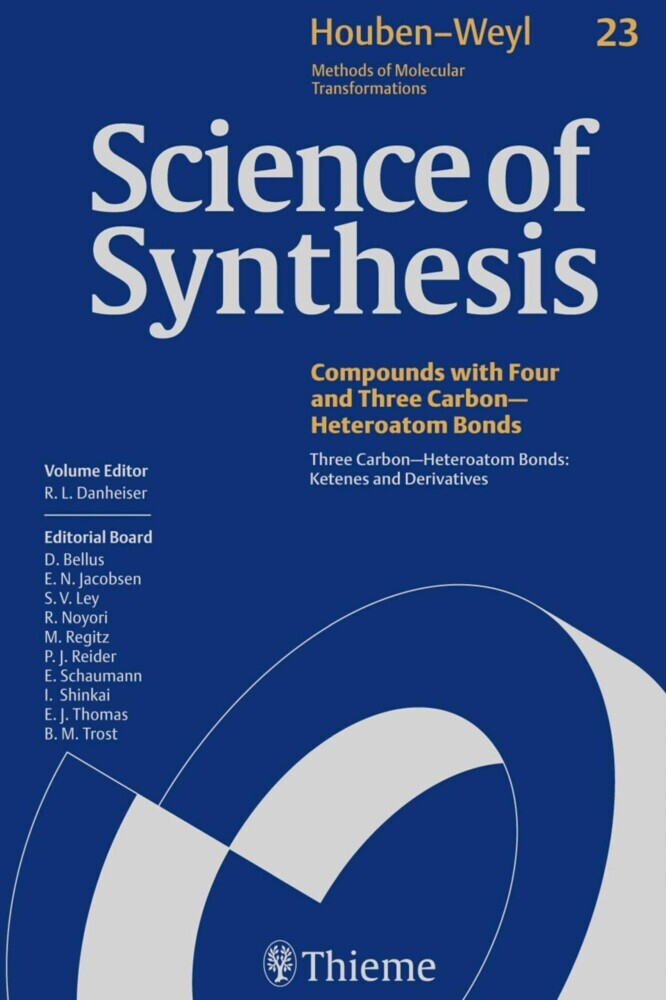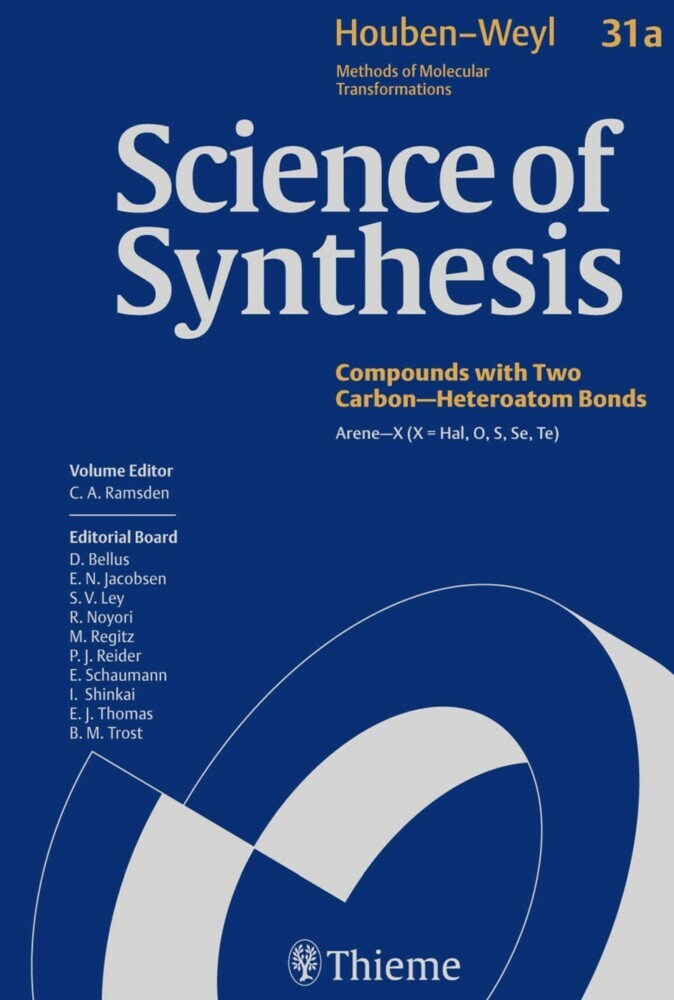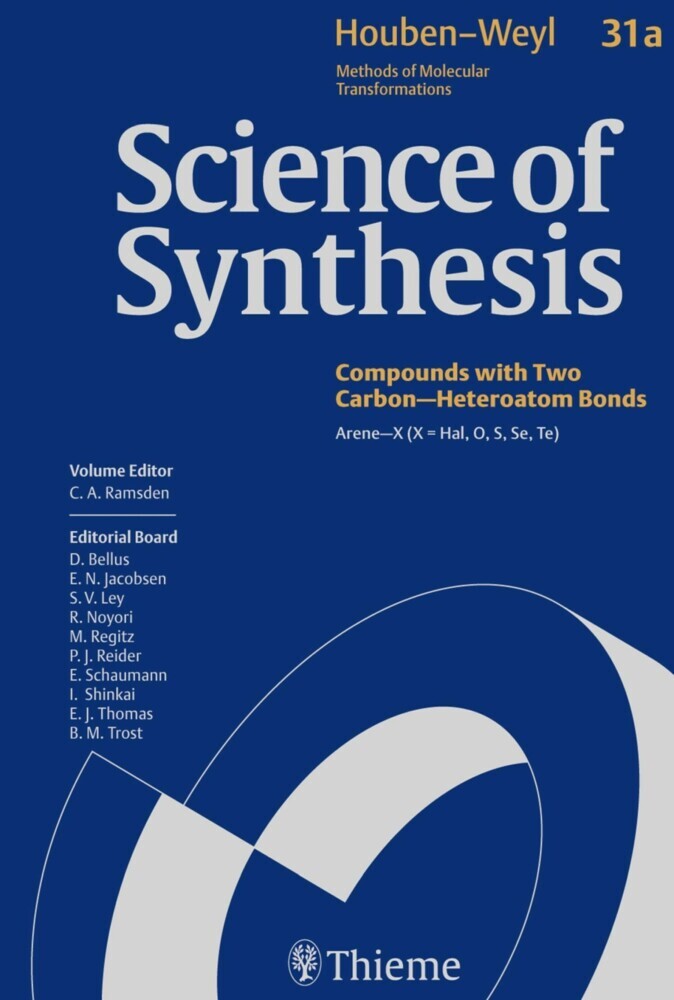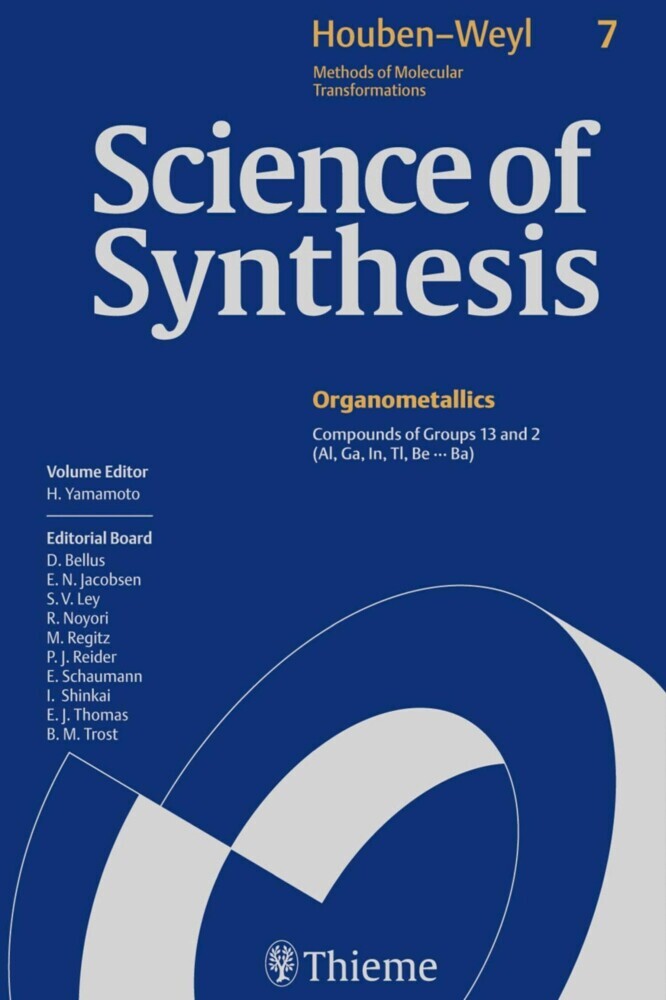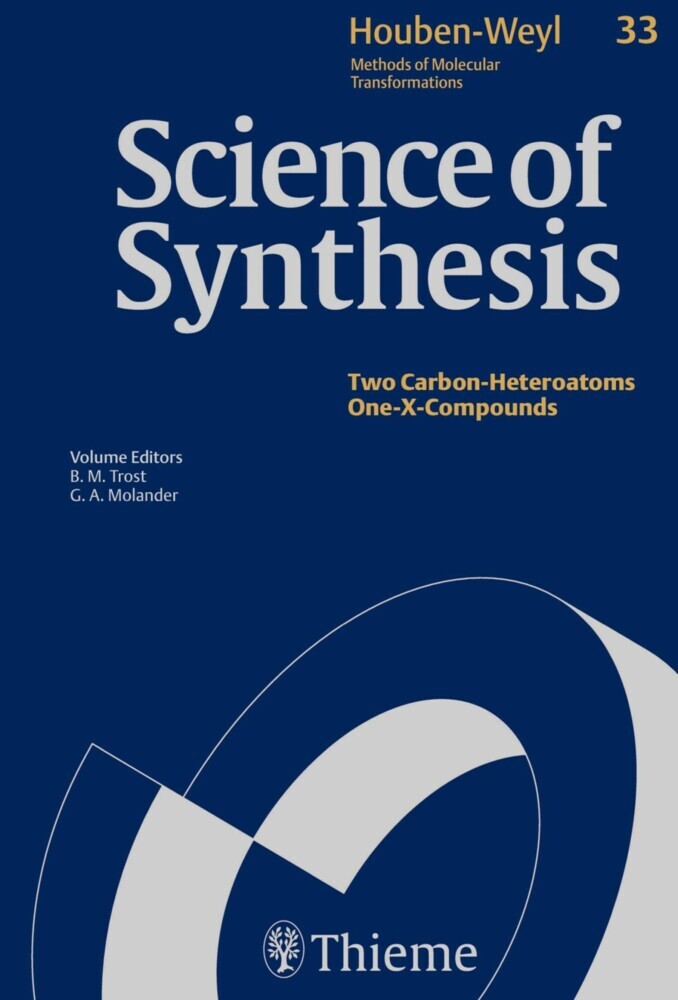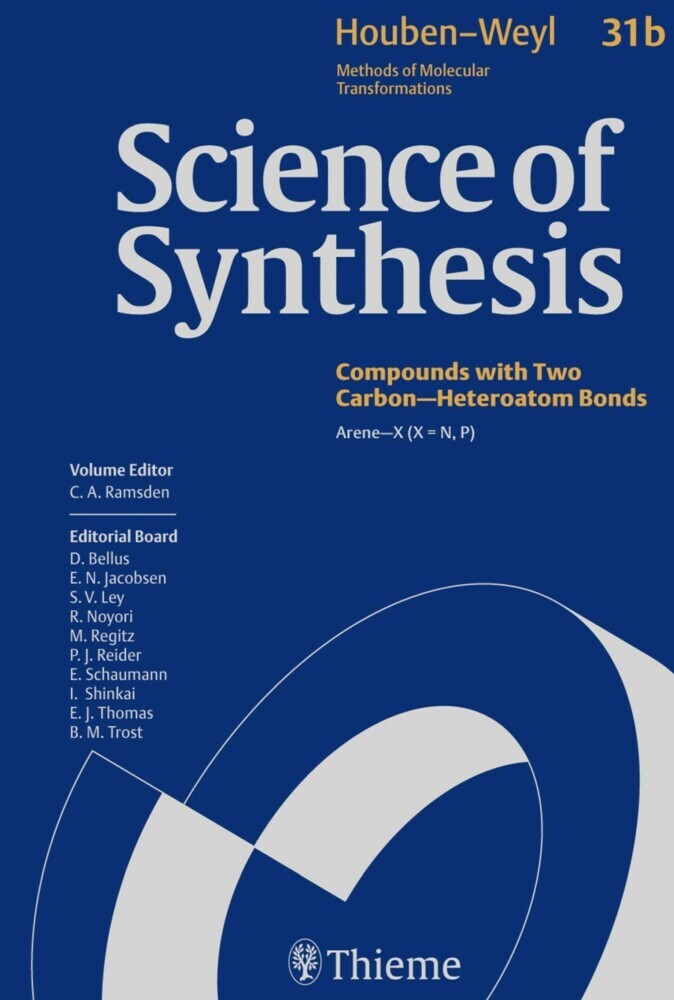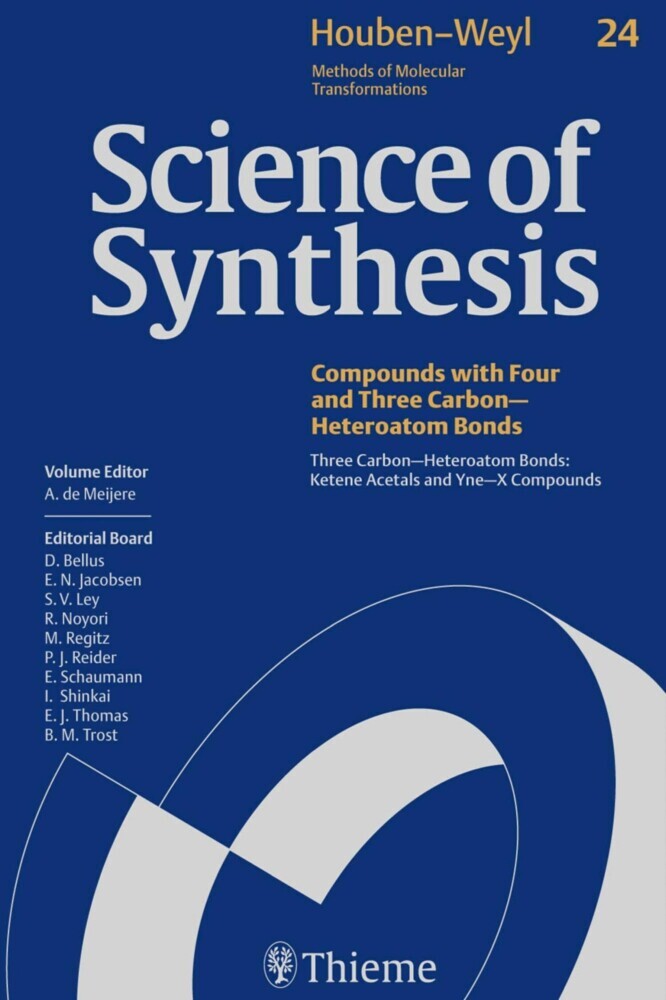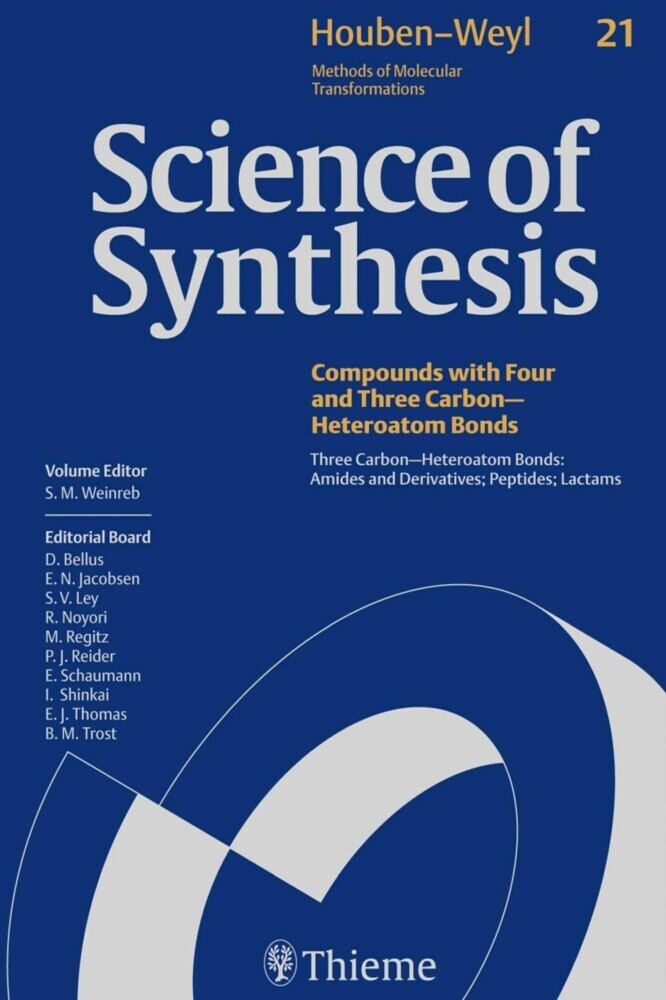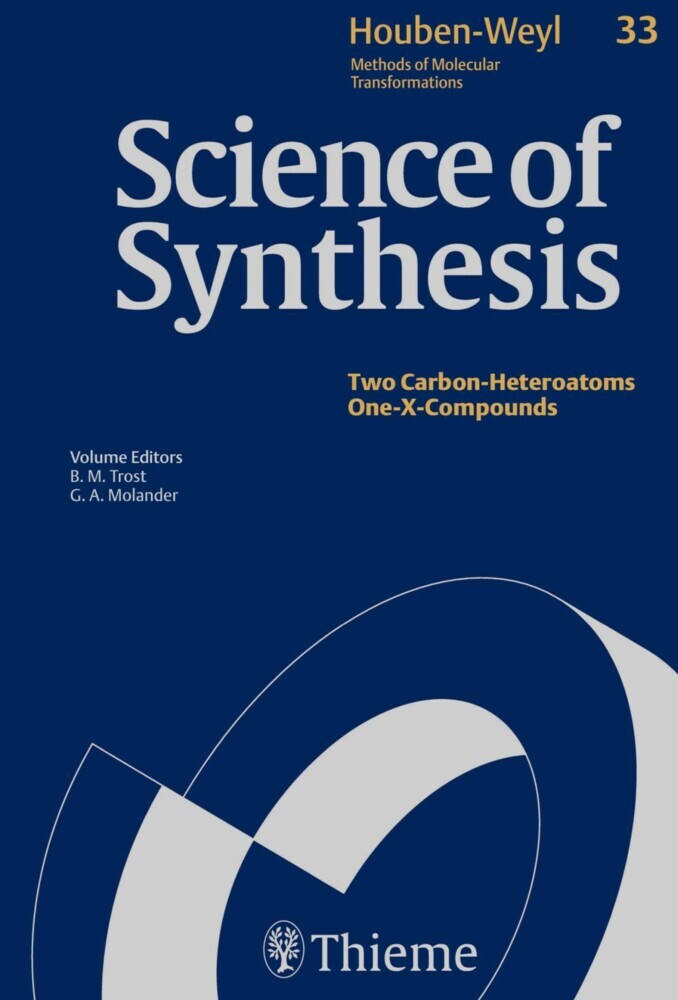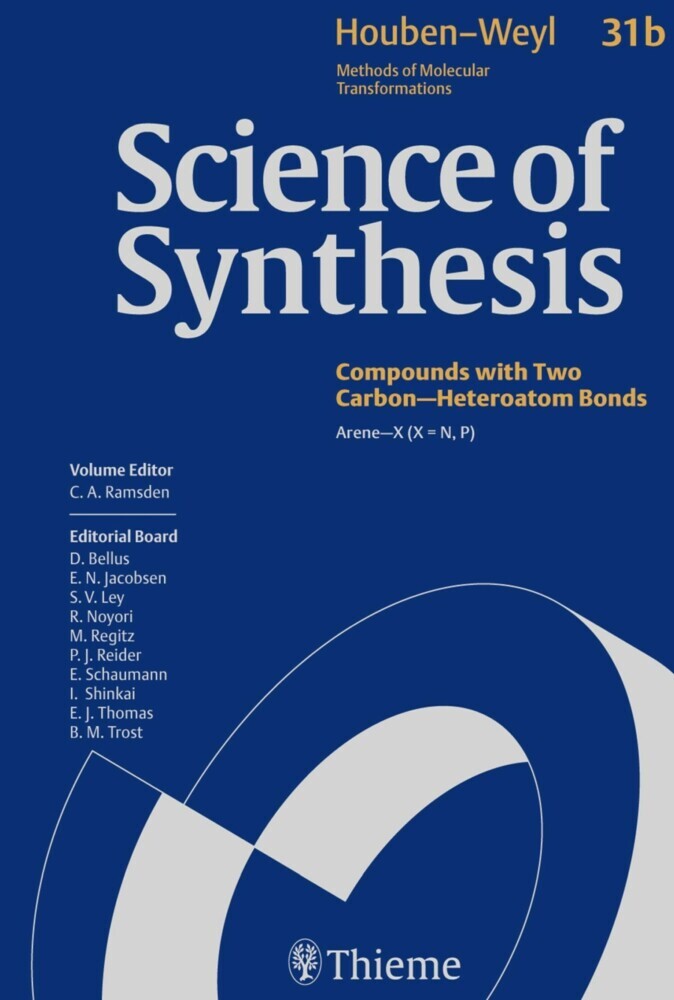Science of Synthesis: Houben-Weyl Methods of Molecular Transformations Vol. 23
Three Carbon-Heteroatom Bonds: Ketenes and Derivatives
Science of Synthesis: Houben-Weyl Methods of Molecular Transformations Vol. 23
Three Carbon-Heteroatom Bonds: Ketenes and Derivatives
Science of Synthesis: Houben-Weyl Methods of Molecular Transformations is the entirely new edition of the acclaimed reference series Houben-Weyl, the standard synthetic chemistry resource since 1909. This new edition is published in English and will comprise 48 volumes published between the years 2000 and 2008.
Science of Synthesis is a quality reference work developed by a highly esteemed editorial board to provide a comprehensive and critical selection of reliable organic and organometallic synthetic methods. This unique resource is designed to be the first point of reference when searching for a synthesis strategy.
- Contains the expertise of presently 400 leading chemists worldwide
- Critically evaluates the preparative applicability and significance of the synthetic methods
- Discusses relevant background information and provides detailed experimental procedures
For full information on the Science of Synthesis series, visit the Science of Synthesis Homepage
1;Science of Synthesis - Volume 23: Three Carbon--Heteroatom Bonds: Ketenes and Derivatives;1 1.1;Title page;3 1.2;Imprint;5 1.3;Preface;6 1.4;Overview;8 1.5;Table of Contents;10 1.6;Introduction;36 1.7;23.1 Product Class 1: Ketene;50 1.7.1;23.1.1 Synthesis of Product Class 1;53 1.7.1.1;23.1.1.1 Method 1: Ketene from Acetic Acid, Acid Anhydrides, and Esters;54 1.7.1.2;23.1.1.2 Method 2: Dehydrohalogenation of Acetyl Halides;54 1.7.1.2.1;23.1.1.2.1 Variation 1: Ionization of Acetyl Halides to Acylium Ions and Deprotonation;56 1.7.1.3;23.1.1.3 Method 3: Pyrolysis of Ketene Dimer;57 1.7.1.4;23.1.1.4 Method 4: Photolysis of Cyclobutanones and Thermolysis;57 1.7.1.5;23.1.1.5 Method 5: Dehalogenation of Haloacetyl Halides;58 1.7.1.6;23.1.1.6 Method 6: Pyrolysis of Acetone;59 1.7.1.7;23.1.1.7 Method 7: Wolff Rearrangement of Diazoacetaldehyde;59 1.7.1.8;23.1.1.8 Method 8: Elimination from Alkynyl Ethers;60 1.7.2;23.1.2 Applications of Product Class 1 in Organic Synthesis;61 1.7.2.1;23.1.2.1 Method 1: Nucleophilic Addition to Ketene;61 1.7.2.1.1;23.1.2.1.1 Variation 1: Enol Acetates from the Reaction of Ketene with Aldehydes and Ketones;63 1.7.2.2;23.1.2.2 Method 2: Electrophilic and Radical Additions to Ketene;64 1.7.2.3;23.1.2.3 Method 3: Dimerization by [2 + 2] Cycloaddition;67 1.7.2.4;23.1.2.4 Method 4: [2 + 2] Cycloaddition of Ketene with Alkenes and Dienes;67 1.7.2.5;23.1.2.5 Method 5: [2 + 2] Cycloaddition of Ketene with Alkynes;69 1.7.2.6;23.1.2.6 Method 6: [2 + 2] Cycloaddition of Ketene with Imines;70 1.7.2.7;23.1.2.7 Method 7: [2 + 2] and [4 + 2] Cycloaddition of Ketene with Carbonyl Groups;71 1.7.2.7.1;23.1.2.7.1 Variation 1: ß-Hydroxy Esters by Titanium Alkoxide Induced Addition of Carbonyl Compounds to Ketene;77 1.7.2.8;23.1.2.8 Method 8: [2 + 2] Cycloaddition of Ketene with Azobenzenes;77 1.7.2.9;23.1.2.9 Method 9: [2 + 1] Cycloaddition of Ketene with Sulfur Dioxide;78 1.7.2.10;23.1.2.10 Method 10: [2 + 1] Cycloaddition of Ketene with Diazomethane;79 1.7.2.11;23.1.2.11 Method 11: [4 + 2] Cycloaddition of Ketene with Heterodienes;79 1.7.2.12;23.1.2.12 Method 12: Wittig Reaction of Ketene with a Chiral Phosphorane;80 1.7.2.13;23.1.2.13 Method 13: Dimetal Ketenides from Ketene and Metal Salts;80 1.7.2.14;23.1.2.14 Method 14: Decarbonylation of Ketene;81 1.8;23.2 Product Class 2: Silylketenes;88 1.8.1;23.2.1 Product Subclass 1: Silyl-Substituted Aldoketenes;89 1.8.1.1;23.2.1.1 Synthesis of Product Subclass 1;89 1.8.1.1.1;23.2.1.1.1 Method 1: Dehydrohalogenation of Acyl Halides;89 1.8.1.1.2;23.2.1.1.2 Method 2: Dehydration of Silylacetic Acids;90 1.8.1.1.3;23.2.1.1.3 Method 3: Thermolysis of 1-Alkoxy-2-silylacetylenes;90 1.8.1.1.4;23.2.1.1.4 Method 4: 1,3-Silyl Shift of (Trimethylsiloxy)acetylene;92 1.8.1.1.5;23.2.1.1.5 Method 5: Thermolysis of Silylacetic Anhydrides;92 1.8.1.2;23.2.1.2 Applications of Product Subclass 1 in Organic Synthesis;93 1.8.1.2.1;23.2.1.2.1 Method 1: [2 + 2] Cycloadditions Leading to ß-Lactones;93 1.8.1.2.2;23.2.1.2.2 Method 2: [2 + 2] Cycloadditions Leading to ß-Lactams;99 1.8.1.2.3;23.2.1.2.3 Method 3: [2 + 2] Cycloadditions Leading to Cyclobutanones;100 1.8.1.2.4;23.2.1.2.4 Method 4: Formation of Allenes via Wittig Reaction with Phosphorus Ylides;100 1.8.1.2.5;23.2.1.2.5 Method 5: Formation of Ketenimines via Reaction with Iminophosphoranes;101 1.8.1.2.6;23.2.1.2.6 Method 6: Formation of Cyclopropanones and Cyclobutanones via Reaction with Diazo Compounds;102 1.8.1.2.7;23.2.1.2.7 Method 7: Formation of a-Silyl Ketones;103 1.8.1.2.8;23.2.1.2.8 Method 8: Formation of 2H-1-Benzopyran-2-ones from Phenols;105 1.8.1.2.9;23.2.1.2.9 Method 9: (Trimethylsilyl)acetylation of Alcohols and Amines;106 1.8.2;23.2.2 Product Subclass 2: (Silyl)(trialkylmetal)ketenes;107 1.8.2.1;23.2.2.1 Synthesis of Product Subclass 2;107 1.8.2.1.1;23.2.2.1.1 Method 1: Elimination from (Silyl)(trialkylmetal)acetates;107 1.8.2.1.2;23.2.2.1.2 Method 2: Trapping of Lithium 2-Lithioac
Aizpurua, Jesus M.
Danheiser, Rick L.
| ISBN | 9783131719713 |
|---|---|
| Artikelnummer | 9783131719713 |
| Medientyp | E-Book - PDF |
| Copyrightjahr | 2014 |
| Verlag | Georg Thieme Verlag KG |
| Umfang | 1089 Seiten |
| Sprache | Englisch |
| Kopierschutz | Digitales Wasserzeichen |

